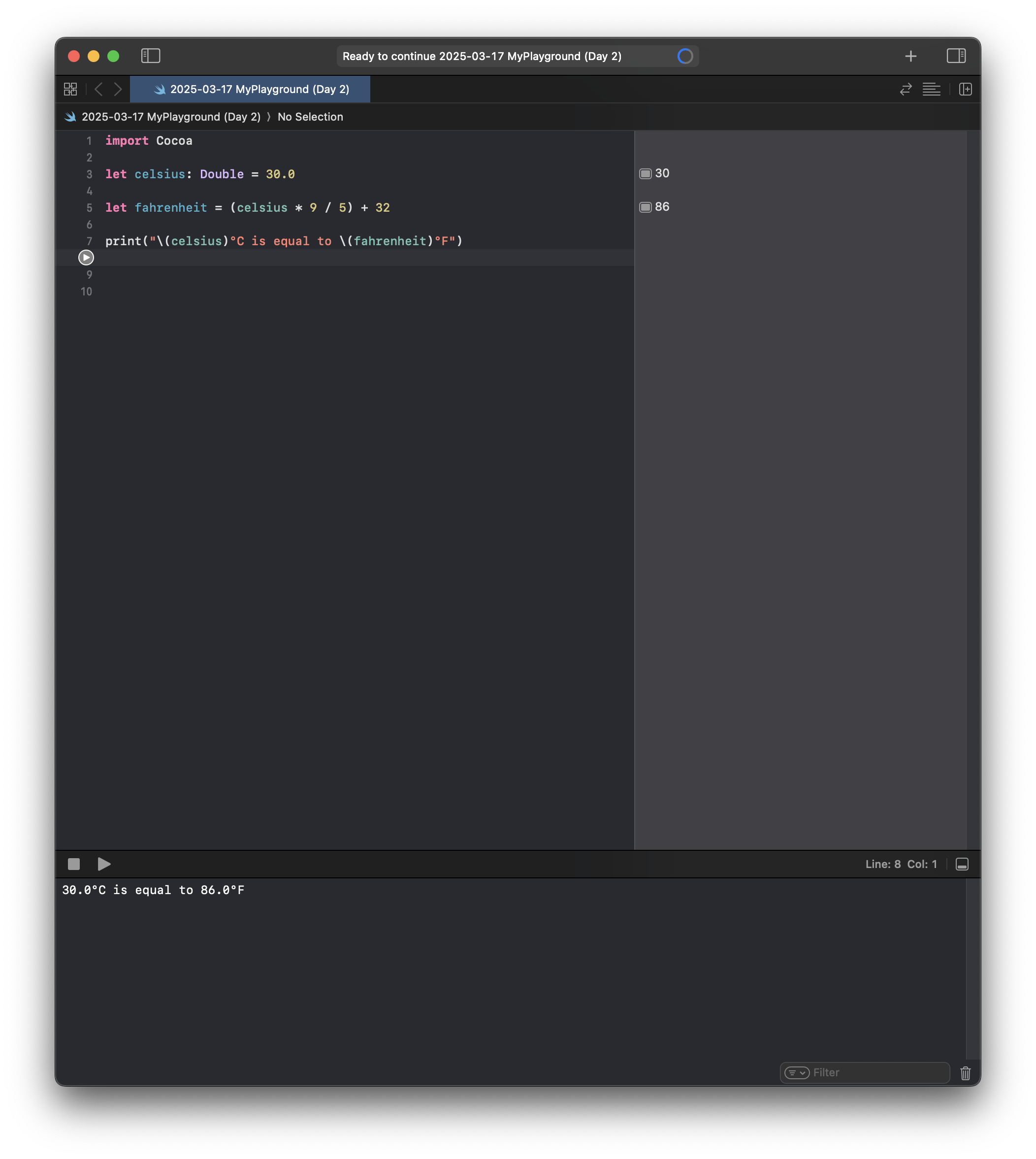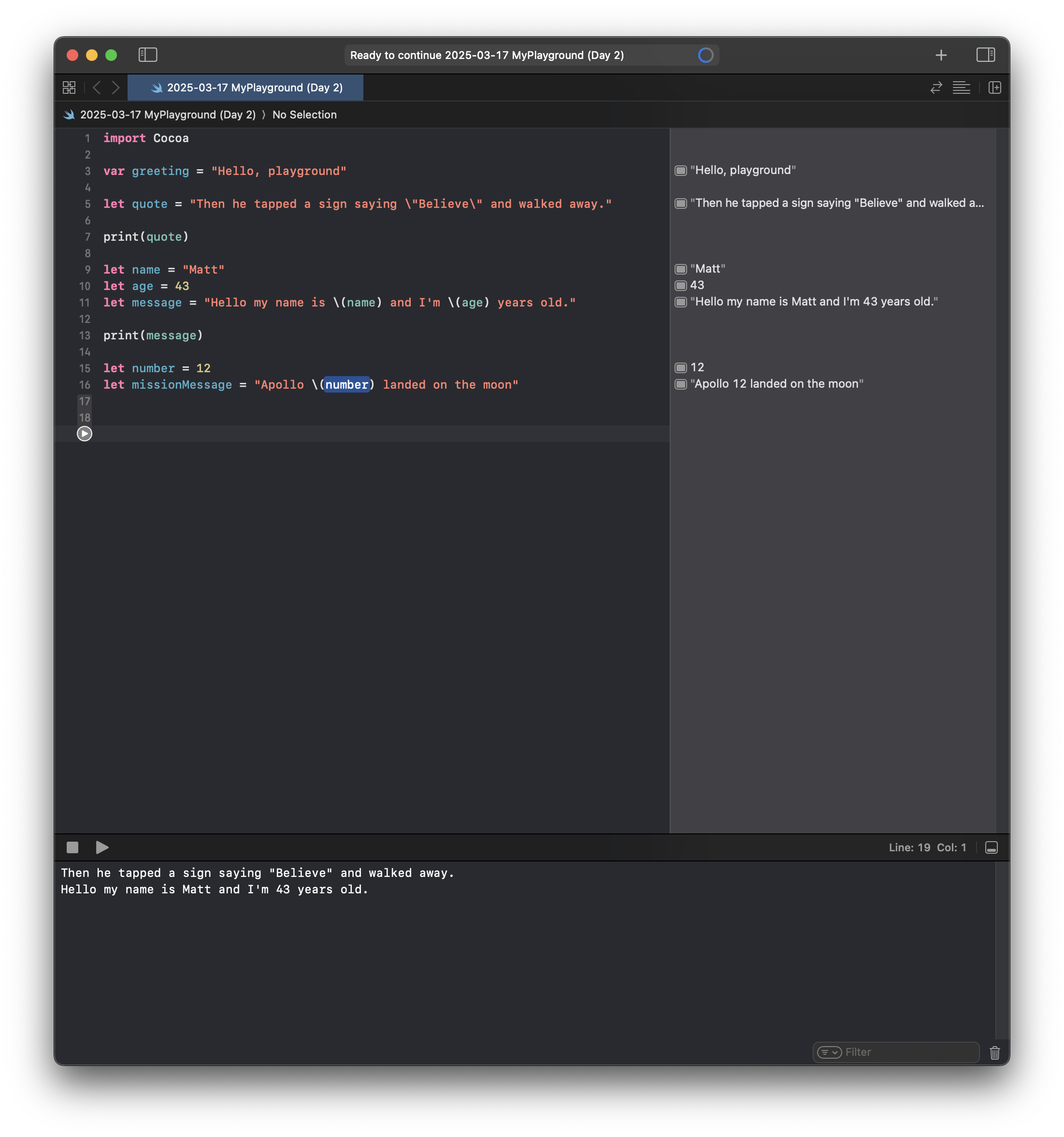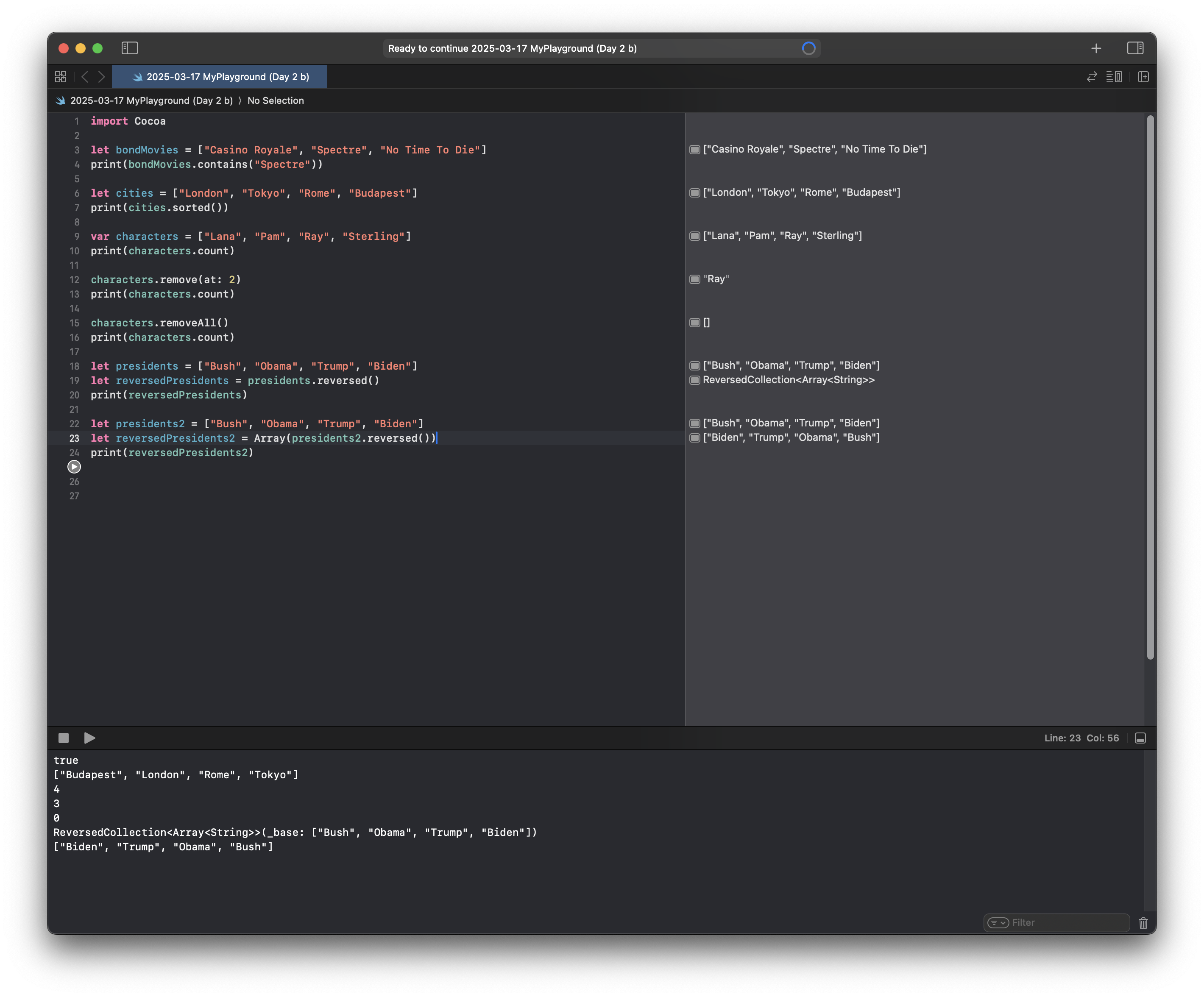100 Days of SwiftUI - Day 2
 Matt B
Matt BSecond post in my #100DaysOfSwiftUI journey. Here’s some stuff I learned (at https://www.hackingwithswift.com/100/swiftui/2):
Note: I’m going to make these posts shorter because I think it is distracting me from actually learning. I’m spending so much time getting the formatting right and such, and not as much time learning. I think I will only learn this stuff by actually using it (like any language), so I think the quicker I get to the point where I get ideas about things I can do and then can look up how to do it, the better.
⸻
Quotes inside strings
You can include quotes inside strings as long as you put a backslash \ before the quote. i.e.
let quote = "Then he tapped a sign saying \"Believe\" and walked away."
⸻
String interpolation
Usually you can’t add integers with strings and vice versa, but Swift does let you if you tell it to treat an integer as a string, with this method:
let number = 11
let missionMessage = "Apollo " + String(number) + " landed on the moon"
But using string interpolation is more efficient:"
let number = 11
let missionMessage = "Apollo \(number) landed on the moon"
But you can’t include both in the same project (with the same constants anyway), I found.
⸻
My first app lol
Note: Paul Hudson wanted me to pay for a video that showed me how to code my first app. He lied because he said the course was free. Yeah. Write the course in such a way where there’s no way the student is going to be able to complete the assignment, even with the hints you provided. Lame. I just used ChatGPT haha. I’m not giving money to a sneaky liar.
This app starts with defining a temperature in Celsius then converts it to Fahrenheit by:
multiplying by 9
dividing by 5
and adding 32
import Cocoa
let celsius: Double = 30.0
let fahrenheit = (celsius * 9 / 5) + 32
print("\(celsius)°C is equal to \(fahrenheit)°F")
Things to note:
Celsius temperatures often contain decimal points, so we use the Double type to ensure precise calculations. This makes sense because:
• Double allows decimal values, unlike Int, which only handles whole numbers.
• Using Double prevents unintended rounding errors when performing calculations like multiplication and division.
Here’s how it looks in Xcode:

Exploring Strings
I also explored different ways to work with strings in Swift:
Declaring and Printing Strings
Escaping Quotes Inside Strings
Using String Interpolation to Insert Variables
Combining Numbers and Strings in Interpolation
The image below shows my Swift Playground where I experimented with these concepts:

Appending to arrays and printing count
var albums = ["Pretty Hate Machine"] // Initialize an array with one element
albums.append("Broken") // Append another album
albums.append("The Downward Spiral") // Append a third album
print(albums.count) // Expected output: 3
I learned that without the [ and ] around “Pretty Hate Machine”, it would not create an array, and print(albums.count) would result in a count of the numbers of characters in all 3 album names combined, instead of how many albums in the array, which would be 3 as shown above.
Arrays
Lastly, I explored:
Checking if an Array Contains an Element
Sorting an Array in Ascending Order
Counting Elements in an Array
Removing an Element from an Array
Removing All Elements from an Array
Reversing an Array in Swift
Using reversed() (Lazy Reversal)
Converting a Reversed Collection to an Array

Subscribe to my newsletter
Read articles from Matt B directly inside your inbox. Subscribe to the newsletter, and don't miss out.
Written by
